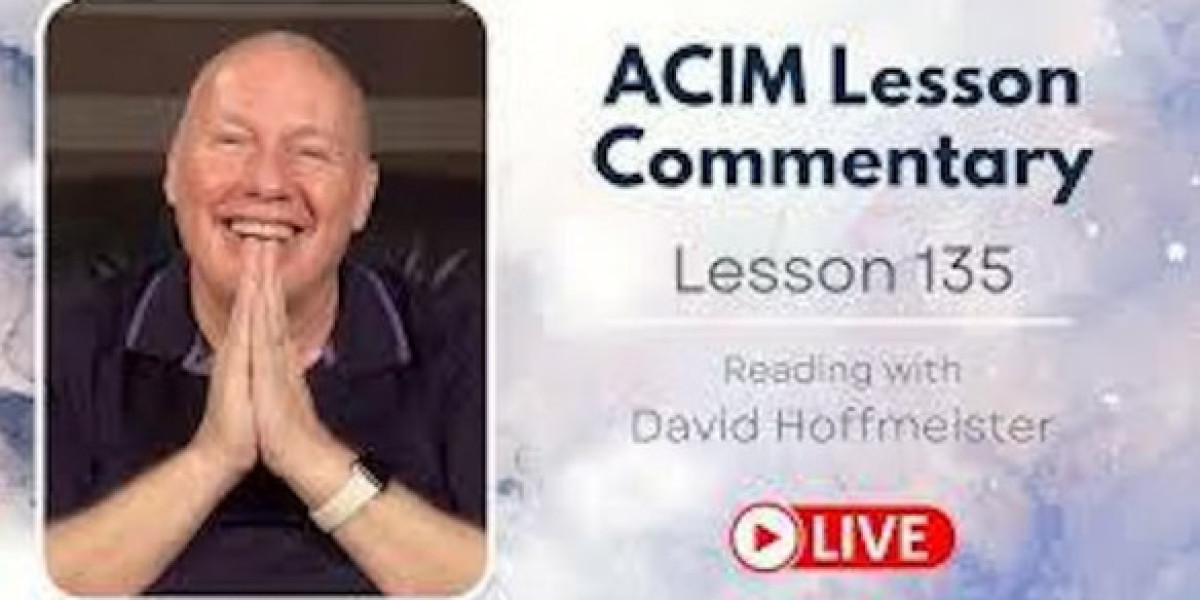In a world where chaos and confusion often seem to dominate, many people are seeking a deeper understanding of life and a path to inner peace. For millions, "A Course in Miracles" (ACIM) has provided that path, offering a spiritual framework that transcends traditional religious boundaries. This profound spiritual teaching, which emerged in the 1970s, continues to inspire and transform the lives of those who are willing to embrace its principles. In this article, we will explore the origins, teachings, and impact of "A Course in Miracles" on the lives of individuals around the world.
The Origins of "A Course in Miracles"
"A Course in Miracles" is a unique spiritual text that was channeled by Dr. Helen Schucman, a clinical psychologist, between 1965 and 1972. The story of its origin is both intriguing and mysterious. Helen Schucman, who was a self-professed atheist, began experiencing a series of inner experiences that she described as a "Voice" dictating to her. She believed that this Voice was that of Jesus Christ, though the teachings of ACIM are not tied to any specific religion.
Over the course of seven years, Schucman transcribed the messages she received, with the assistance of her colleague, Dr. William Thetford. The result was a voluminous text that was eventually published in 1976 as "A Course in Miracles." The Course consists of three parts: the Text, which lays out the theoretical foundation; the Workbook for Students, which contains 365 lessons designed to help students apply the principles in their daily lives; and the Manual for Teachers, which provides guidance for those who choose to teach the Course to others.
Since its publication, "A Course in Miracles" has gained a devoted following and has been translated into numerous languages. Despite its Christian terminology, the Course is embraced by individuals of various religious backgrounds, as well as those who identify as spiritual but not religious. The universal nature of its teachings appeals to anyone seeking a deeper understanding of themselves and the world around them.
Core Teachings of "A Course in Miracles"
At its heart, "A Course in Miracles" teaches that the world we perceive is an illusion, created by our ego to keep us separated from our true nature, which is love. The Course emphasizes that our true identity is not the body or the personality, but rather the eternal, unchanging spirit. It is this spirit that is one with God and all creation.
One of the central themes of ACIM is the concept of forgiveness. However, forgiveness in the Course is not about condoning or overlooking the actions of others. Instead, it is about recognizing that the perceived wrongs we hold onto are part of the illusion and that they have no real power over us. True forgiveness, according to the Course, involves letting go of our judgments and grievances, and choosing instead to see the inherent innocence in everyone.
The Course also teaches that all suffering, whether physical, emotional, or psychological, stems from the belief in separation from God. This belief creates fear, guilt, and a sense of lack, which manifest in various forms of pain and conflict. The purpose of the Course is to guide students in undoing this belief in separation and returning to the awareness of their oneness with God.
To achieve this goal, "A Course in Miracles" offers a structured approach to spiritual growth. The Workbook for Students provides daily lessons that are designed to train the mind to shift from fear-based thinking to love-based thinking. These lessons are not meant to be intellectual exercises, but rather practical tools for transforming one's perception and experience of the world.
The Impact of "A Course in Miracles"
Since its introduction to the public, "A Course in Miracles" has had a profound impact on the lives of countless individuals. Its teachings have inspired a wide range of spiritual teachers, authors, and practitioners, many of whom have incorporated the principles of the Course into their own work. Notable figures such as Marianne Williamson, Gabrielle Bernstein, and David Hoffmeister have become well-known proponents of ACIM, spreading its message to a broader audience.
One of the reasons for the Course's enduring appeal is its emphasis on practical application. Unlike some spiritual teachings that remain theoretical, "A Course in Miracles" encourages students to actively apply its principles in their daily lives. This focus on experiential learning allows individuals to see tangible results, whether in the form of improved relationships, greater peace of mind, or a deeper sense of purpose.
The Course has also played a significant role in the broader spiritual movement that has gained momentum in recent decades. As more people seek alternatives to traditional religious practices, they are drawn to the inclusive and non-dogmatic nature of ACIM. The Course's teachings on love, forgiveness, and inner peace resonate with those who are searching for a more compassionate and holistic approach to spirituality.
How to Begin Your Journey with "A Course in Miracles"
For those who are new to "A Course in Miracles," the prospect of diving into such a complex and voluminous text can be daunting. However, the Course is designed to be accessible to anyone who is open to its message, regardless of their prior spiritual experience.
The first step in beginning your journey with ACIM is to approach it with an open mind and a willingness to see things differently. The Course challenges many of the beliefs and assumptions that we hold about ourselves and the world, so it is important to be receptive to new ideas.
Next, it is recommended to start with the Workbook for Students. The 365 lessons are designed to be practiced one day at a time, allowing for a gradual and steady transformation of your perception. The lessons are simple but profound, and they often involve short meditation exercises, affirmations, or reflections.
While the Workbook is a central component of the Course, it is also valuable to spend time with the Text, which provides the theoretical foundation for the lessons. Reading the Text alongside the Workbook can help deepen your understanding of the concepts and principles presented in the lessons.
It is also helpful to connect with others who are studying the Course. Many communities and study groups exist around the world, both in-person and online, where students can share their experiences, ask questions, and support one another. Engaging with a community can provide encouragement and motivation, especially during times when the Course's teachings may feel challenging or difficult to integrate.
Integrating "A Course in Miracles" into Daily Life
One of the key challenges for students of "A Course in Miracles" is integrating its teachings into daily life. The Course is not just a philosophy to be studied, but a practical guide to living in alignment with love and truth.
One of the most effective ways to integrate the Course's teachings is to use the daily lessons as a foundation for your spiritual practice. By consistently practicing the lessons, you train your mind to shift from fear-based thinking to love-based thinking, which gradually transforms your experience of the world.
Another important aspect of integrating the Course is practicing forgiveness in your relationships. Whenever you encounter conflict or difficulty with others, use the opportunity to apply the principles of forgiveness as taught in the Course. This means recognizing that the conflict is a reflection of your own fear or judgment and choosing to see the situation through the lens of love and compassion.
It is also valuable to cultivate a daily habit of mindfulness and self-awareness. The Course teaches that our thoughts create our reality, so becoming aware of your thoughts and choosing those that are aligned with love is a powerful practice. Regular meditation, journaling, or simply taking a few moments each day to reflect on your thoughts and feelings can help reinforce this habit.
Finally, it is important to be patient with yourself and trust the process. "A Course in Miracles" is not a quick fix or an overnight solution, but a lifelong journey of spiritual awakening. There will be times when the teachings feel challenging or when you struggle to apply them, but this is a natural part of the process. The key is to remain committed to the practice and to trust that the Course is guiding you toward greater peace and fulfillment.
Conclusion
"A Course in Miracles" is more than just a spiritual text; it is a path to inner peace, healing, and awakening. Its teachings have touched the lives of millions, offering a transformative approach to understanding ourselves and the world around us. By embracing the principles of love, forgiveness, and oneness, we can begin to see beyond the illusions of the ego and experience the true nature of reality. Whether you are new to the Course or have been studying it for years, its message is clear: the path to miracles lies within, and it is available to all who are willing to walk it.








